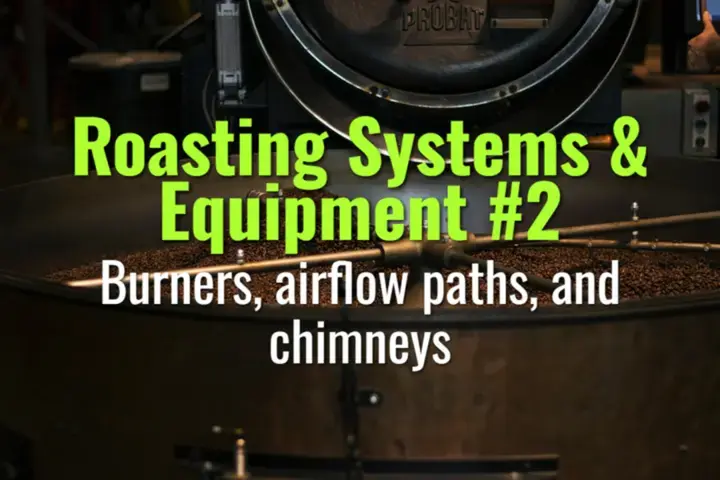Burners, airflow paths, and chimneys
Explore how burners, airflow management, and chimney design impact heat distribution, roast consistency, and smoke/degassing control in coffee roasting systems.
- Coffee Basics Nerds
- 1 min read

Key Concepts
-
Burners:
-
Provide the primary heat source in both drum and fluid-bed roasters.
-
Types: Gas (propane/natural gas) and electric.
-
Control flame intensity to adjust roast rate and temperature curve.
-
Airflow Paths:
-
Directly affect heat transfer efficiency and evenness.
-
Must be adjustable to manage bean agitation, cooling rate, and smoke removal.
-
In drum roasters: airflow can be used to supplement conduction and convection.
-
In fluid-bed roasters: airflow is the primary mechanism for roasting.
-
Chimneys and Exhaust:
-
Control venting of smoke, chaff, and combustion gases.
-
Proper chimney design ensures consistent airflow, prevents backpressure, and influences roast development.
-
Adjustable dampers allow fine-tuning of airflow, impacting first crack timing and overall roast profile.
Operational Tips
- Synchronize burner intensity and airflow adjustments to maintain desired Rate of Rise (RoR).
- Monitor exhaust temperature and smoke color to prevent scorching and achieve consistent roast.
- Regularly clean chimneys and airflow paths to avoid buildup that can alter roasting dynamics.
Summary
Mastering burners, airflow paths, and chimney operation is crucial for achieving precise roast profiles, consistent cup quality, and efficient roasting system performance.